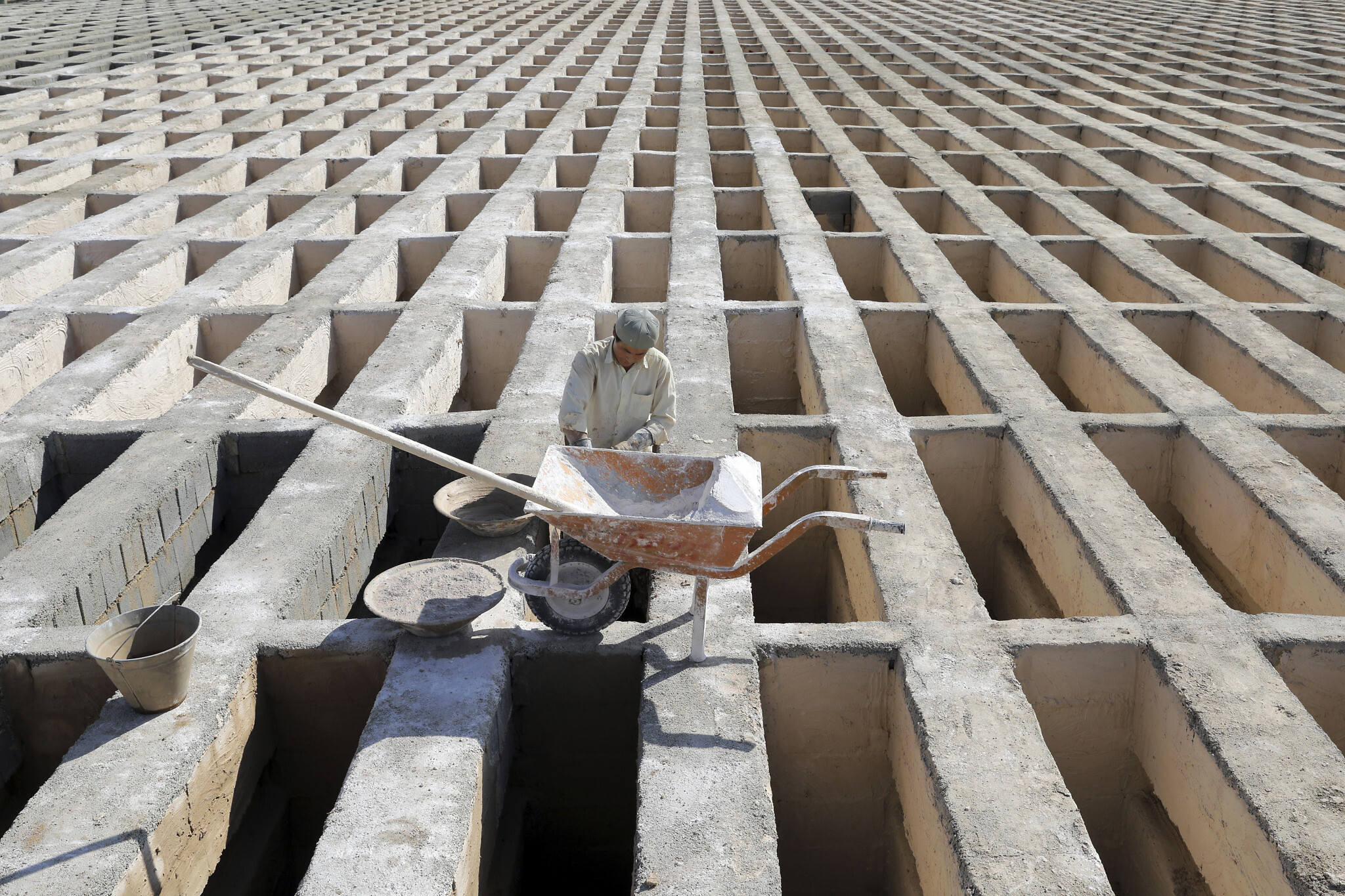ABSTRACT
Source: Ebrahim Noorozi, A cemetery worker prepares new graves at the Beheshte-Zahra cemetery on the outskirts of the Iranian capital, Tehran, Iran, Nov. 1, 2020, photograph, Apnews, November 11, 2020.
The modern cemeteries in the larger cities of Iran, one of which is Mashhad, are known by standardized burial units, at times containing up to four floors. During the COVID-19 pandemic of 2021, a photo of a cemetery worker preparing new graves in Tehran’s Behesht-e Zahra Cemetery accompanied an article entitled: ‘In Iran, a massive cemetery struggles to keep up with the virus.’ [1]
Although death is embedded in the culture and history of Mashhad, the present-day displacement of burials to the outskirts of the city, together with a streamlined, dehumanized, and bureaucratized funeral ritual, have resulted in a disengagement between spaces for the living and for the dead. As a response to this (global) condition, the thesis reflects on the tensions that have emerged between traditional cultural values and modern changes to the burial process.
In the act of creating a variety of mappings, here referred to as ‘complexity drawings’, these tensions are translated into three rest-stops: the playscape, the washing station, and the viewing tower. The constellation of these interventions is located along the highway that connects the city to the main cemetery, functioning as an extension of the urban territory. Each rest-stop design accommodates a place for rest and leisure while simultaneously providing new emotional space to an extended funeral ritual. By interweaving the ritual of death with recreational activities, the interventions act as mediators between the territories of the dead and the living.
